For the brand and the period it was a radical design, being the first front wheel drive Alfa Romeo, the first Alfa with an engine smaller than 1200cc and
the first Alfa road car with a boxer engine. It was also the first Alfa Romeo to be built outside Milan, a controversial decision which also resulted in the 'Milan' being dropped
from the Alfa Romeo badge on this car.
The main points of the design were the 1186cc 4 cylinder horizontally opposed engined with sohc for each cylinder bank,
disc brakes (inboard at the front) all round and a handbrake operating on the front callipers, MacPherson strut front suspension and a dead
axle at the rear, rack and pinion steering and a very neat body design by Giorgio Giugiaro (see the structure).
1974 saw the arrival of the Alfasud L (for 'Lusso', or luxury). This benefitted from some exterior detailing in chrome and improvements to
the dashboard and interior. The basic car continued as the Alfasud N. The Alfasud Giardinetta (estate) arrived the following year, an unusual
three door design with long rear side windows. It was, nevertheless, a practical car with a huge load volume and a low loading lip thanks to the
top hinged rear hatch.
The next arrival was the 'SUPER' in late 1977. Available with both the 1200 and 1300 engine (both four doors) this had a number of improvements,
both externally (black rubber strips on bumpers, various other black trim) and internally (carpet, instruments, centre console, seats, trim, etc).
The next change came in 1978 with the introduction of two new engines, a 1350cc unit replacing the 1286cc unit, and an all new 1490cc engine.
In the saloons these engines created the 1.3 ti (same name, now with 79bhp) and the new 1.5 ti (with 85bhp), whilst a four-door 1.5 Super was also
added to the range. For a short period of time a lower powered 1351cc engine (71bhp with a single choke carburettor) was fitted to the Super
A significant increase in power came in 1979 thanks to the adoption of two twin carburettors on both the 1351cc and 1490cc engines in the Alfasud ti
and Sprint versions. The latter were renamed Sprint Veloce. Along with tweaks to the compression ratio, camshafts etc these units now produced 86bhp and 95bhp respectively.
The whole range was given a mid-life restyling in 1980. The grille, wheels, door handles, dashboard, bumpers and numerous other areas were all
renewed, giving the car a more modern up-to-date look. An even bigger change the following year, when in 1981 the three door cars were introduced.
The small bootlid was replaced by a large hatchback, although the high loading rim limited accessibility.
Folding rear seats were also fitted, which provided a useful luggage area.
Around this time some limited edition emerged, including the Alfasud Sprint Plus with a richer level of equipment, the Alfasud Junior, with a more
basic specification and the Alfasud Sprint Veloce 1.5 Trofeo celebrating the one-make race series for that car.
1982 was the final full year of production for the saloon, and various changes were made. The four doors were deleted from the range (replaced by the new 5-door version)
except for the Junior (which was also available as a 5-door S and SC). Two new trim levels were adopted, the S and SC (Super and
Super Comfort), both available with the 1.2 or 1.3 engine, and a new Gold Cloverleaf trim was introduced at the top of the range, powered by the 1.5 unit.
The ti was also upgraded, becoming the ti 1.5 Quadrifoglio Verde (Green Cloverleaf) with an extra 10bhp (105bhp) through modified camshafts, carburettor
jets, cylinder heads and more. Various other minor interventions were also carried out, including a new interior trim.
Production of the saloon stopped in 1983
when it was replaced by the new 33. The Sprint continued
on until 1989, adopting the 105bhp 1.5 unit in 1983 (becoming the Green Cloverleaf too) and then later in life being fitted with the 1712cc unit from
the 33. Various other changes were also made to the later Sprints to commonise
parts with the 33, including the use of drum brakes on the revised rear
axle and outboard disc brakes at the front replacing the original Sud's
inboard ones.
Worthy of mention is also the 1982 Sprint 6C, in which Autodelta fitted
a GTV6 160bhp V6 engine behind the front seats, driving the rear wheels.
An estate version, the Giardinetta, was
also produced which had two doors and a very long, single piece rear side
window.
Click here
to see the limited edition 'Valentino'. See also our Alfa
Romeo Concepts Page for pictures of the Caimano Alfasud-based coupe
(also on our Alfa Romeo Museum page) and
the Sprint 6C mid-engined racecar.
A total of 893,719 Alfasuds were sold from
1972 to 1983, whilst 121,434 Alfasud Sprints were built from 1976 to 1989.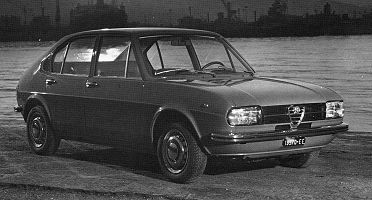 Development of a new, small, front-wheel drive Alfa Romeo began in the late 60's, at
the same time as began the construction of a new factory at Pomigliano
d'Arco in Southern Italy, where the new car was to be built. Shown to the public
for the first time at the Turin Motorshow in 1971, the Alfasud immediately
received high praise from road testers for it's handling. It went on sale some 6 months later, in June 1972, for a price of 1,420,000 Italian Lire.
Development of a new, small, front-wheel drive Alfa Romeo began in the late 60's, at
the same time as began the construction of a new factory at Pomigliano
d'Arco in Southern Italy, where the new car was to be built. Shown to the public
for the first time at the Turin Motorshow in 1971, the Alfasud immediately
received high praise from road testers for it's handling. It went on sale some 6 months later, in June 1972, for a price of 1,420,000 Italian Lire.
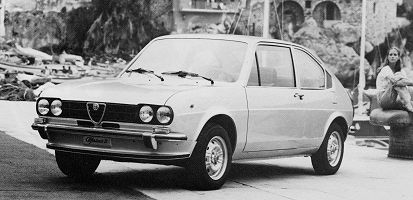 Initially the car was only available with
four doors, but the arrival of the Alfasud ti a year later brought two
doors, a higher compression ratio (up to 9.0), some more power (up to 68bhp)
and a five speed gearbox. Externally the ti received more sporty twin round headlights
instead of the original square units on the base car, a deeper front and a black rubber rear spoiler, and different pressed steel wheels.
Inside cloth inserts in the seats, a carpet and a revcounter differentiated the ti.
Initially the car was only available with
four doors, but the arrival of the Alfasud ti a year later brought two
doors, a higher compression ratio (up to 9.0), some more power (up to 68bhp)
and a five speed gearbox. Externally the ti received more sporty twin round headlights
instead of the original square units on the base car, a deeper front and a black rubber rear spoiler, and different pressed steel wheels.
Inside cloth inserts in the seats, a carpet and a revcounter differentiated the ti.
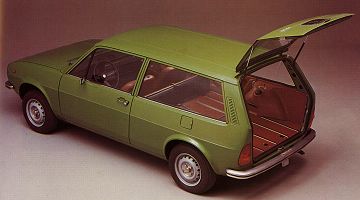 In 1976 the Alfasud Sprint was introduced. This shared the same floorpan and
mechanicals as the saloons, but had a new coupe body (two doors plus hatchback,
also designed by Giugiaro) and was fitted with a new 1286cc engine generating
75bhp driving through a five speed gearbox. Shortly afterwards
this engine was fitted into the two-door saloon, creating the 1.3 ti. Around the
same time the five speed gearbox became available in the 1186cc four door
car, creating the 5M.
In 1976 the Alfasud Sprint was introduced. This shared the same floorpan and
mechanicals as the saloons, but had a new coupe body (two doors plus hatchback,
also designed by Giugiaro) and was fitted with a new 1286cc engine generating
75bhp driving through a five speed gearbox. Shortly afterwards
this engine was fitted into the two-door saloon, creating the 1.3 ti. Around the
same time the five speed gearbox became available in the 1186cc four door
car, creating the 5M.
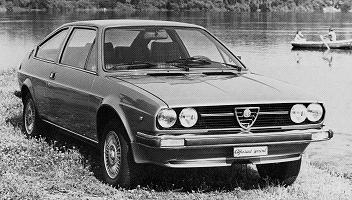 and the Giardinetta, but these versions got the 79bhp engine a year later.
Both the new engines were also fitted to the Sprint from 1978.
and the Giardinetta, but these versions got the 79bhp engine a year later.
Both the new engines were also fitted to the Sprint from 1978.
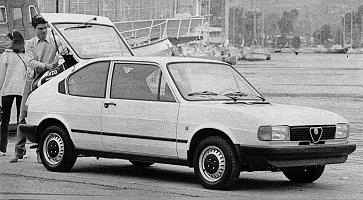 At this point it was possible to buy a 1186cc with four or five doors,
a 1351cc with three or five doors, a 1490cc with five doors as well as
the ti's (1351cc and 1490cc) which all had three doors. All engines were available with either nornal or 'long' gearing.
At this point it was possible to buy a 1186cc with four or five doors,
a 1351cc with three or five doors, a 1490cc with five doors as well as
the ti's (1351cc and 1490cc) which all had three doors. All engines were available with either nornal or 'long' gearing.
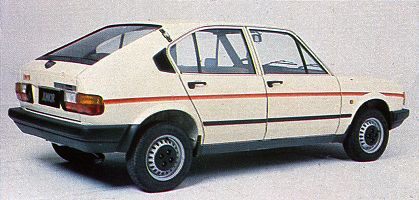
Technical Details
| Driveline | longitudinal engine at front with front wheel drive |
| Suspension | front : MacPherson strut with telescopic dampers and coil springs plus anti-roll bar
rear : dead beam axle with telescopic dampers and coil springs, located by Watts linkages and a panhard rod wheelbase : 2455mm track (front/rear) : Berlina : 1392mm/1359mm track (front/rear) : Giardinetta : 1384mm/1351mm track (front/rear) : Sprint : 1380mm/1350mm (after 1980 : 1392mm/1359mm) |
| Brakes | front : discs, inboard mounted, 259mm diameter (late Sprints with ventilated discs outboard)
rear : discs, 234mm diameter (late Sprints with drums) handbrake operating the front callipers via cable (late Sprints on rear) dual hydraulic circuit with servo assistance |
| Gearbox | 4 and 5 speed manual
hydraulic clutch (180mm diameter plate) |
| Steering | Rack and pinion
3.69 turns lock to lock |
| Dimensions | 3-door, 5-door and giardinetta. |
| Kerb weight | 1186cc (original 4 door) : 862kg
1186cc & 1286cc TI : 838kg (63% front, 37% rear) 1286cc Sprint : 890kg 1.5 Ti Veloce : 914kg 1.5 Sprint Veloce : 925kg (61.2% front, 38.8% rear) |
Click here for a diagram showing
the static pressure distribution over the Alfasud Sprint and here
for internal and external dimensions of the same car.
Here there is a section through the structure of the Alfasud saloon.
Performance
| model | max speed | 0-60mph | in gear acceleration | standing ¼ mile | standing km |
| original 1186cc 4 door | 94 mph | 15.1 sec | 19.5 sec (50-70 in 4th) | 20.3 sec | 37.7 sec |
| 1186cc TI | 102 mph | 12.9 sec | 19.1 sec (50-70 in 5th) | 19.1 sec | 35.6 sec |
| 1286cc Sprint | 102 mph | 13.1 sec | 13.7 sec (50-70 in 5th) | 19.2 sec | 36.7 sec |
| 1286cc TI | 102 mph | 12.1 sec | 12.8 sec (50-70 in 5th) | 18.5 sec | 34.8 sec |
| 1500 TI Veloce | 108 mph | 9.9 sec | 10.3 sec (50-70 in 5th) | 17.4 sec | 32.7 sec |
| 1500 Sprint Veloce | 106 mph | 10.9 sec | 10.8 sec (50-70 in 5th) | 17.6 sec | 33.0 sec |
Tuning
The Alfasud became a legend because of
There are three main areas to concentrate
on, the engine (and transmission), the brakes and the suspension and then
various other details. These three should be done together since they complement
each other, not all of one and none of another !
1. The engine.
Before modifying the engine it is worthwhile
filling it with a good quality synthetic oil and fitting new spark plugs.
An engine oil additive may also be used.
The first improvements are relatively simple.
The air filters can be replaced for aftermarket items which will help the
engine breathe more freely, the type which completely replace the original
airbox are best (one on each carburettor), and the exhaust can be replaced
for one which will restrict the exit of the gases less. The manifold from
the 1700 Sprint can be used on earlier cars to give a larger bore manifold.
If it is a single carburettor model, then
fitting twin carburettors will improve things, on those models with twin
carburettors as standard (36 IDFs were the factory fitted units, from Weber
or Dellorto) then the replacement of the standard 36 carburettors with
40 or 44 units is simple - only the inlet manifolds need opening out slightly.
An electric fuel pump is advisable with these carburettors, if used with
a pressure regulator the return line can be deleted.
Other things to do should include fitting
a cold air intake, two large diameter pipes (minimum 5cm) to provide air
from outside the engine bay to the air filters. The exhaust manifold can
also be lagged with thermal cloth or tape to keep the exhaust gases hotter
(and thus reduce back pressure). This may also help reduce the temperature
of some components nearby (eg brakes).
Further modifications require the machining
Regarding the transmission the main requirement
is to uprate the clutch to handle the increase in power and torque achieved
though the engine modifications. Friction plates can be purchased with
improved materials and heavier duty pressure plates are also available.
Whilst doing this it is worthwhile lightening the flywheel.
2. The brakes.
The front brakes require some attention.
Their inboard location may have helped the handling by reducing the unsprung
weight, but it did not help with cooling ! A basic modification is to install
ducts to cool the front discs - a job made easier by the lack of movement
of the front brakes.
It is relatively easy to replace the brake
discs with drilled and grooved items, and the pads for a harder compound.
The latter should not be too hard (ie no race pads on the road) or they will not function effectively
at the normal 'road' operating temperatures. Stainless steel braided flexible
hoses will improve the pedal feel and reduce the chance of damage whilst
DoT5 fluid (not silicon) will increase the temperature at which it can
operate effectively.
If more serious braking is required the
next modification would be to increase the disc size. It is difficult to
use larger discs on the front, so a popular modification is to fit the
outboard ventilated discs from the Alfa 33, which
can then of course be futher modified with larger discs, four pot alloy
callipers etc...
In order to improve the balance of the
car under braking it is desireable to be able to adjust the balance of
braking from front to rear (and vice versa). This can be accomplished by
fitting a bias valve in the line to the rear brakes, usually in a position
so that it can be reached from the drivers seat.
3. The suspension.
The easiest improvement,and the one which
will probably bring the single most noticeable change, is to replace the
dampers and springs. Fitting lowered springs will improve the cornering,
but must be fitted together with shortened throw dampers, or else the springs
may unseat ! Top adjustable dampers are compromised, but are good for road
and track day cars since it allows the There are then two other main suspension
aims; to reduce the flexiblity in the suspension and to increase the stiffness
of the car, both of which aim at more accurate control of the wheel movement.
To reduce the flexibility it is possible to fit nylon bushes instead of
the normal production rubber items, or if perfection is desired the suspension
can be fitted with metallic bearings (rose joints / rod ends). Spherical
bearing top mounts can also be used. To stiffen the car it is most popular
to fit strut braces. These can be fitted to the front and rear, although
given the design of the Alfasud it is questionable whether a front brace
is neccessary. For more extreme cases a rollcage can be fitted.....
Into this category also fall the choice
of wheels and tyres. With an increase in power it can be necessary to fit
larger tyres (thus requiring larger wheels) but the temptation to fit the
biggest possible should be resisted. Consideration should be given to fitting
a wider tyre on the front (since they provide traction and steering) but
keeping the standard, or a wider but not as wide as the front, tyre at
the rear. This will improve the balance of the car. As with all FIAT, Alfa
Romeo and Lancia cars, used wheels are rarely a problem to find - 6x14"
rims with 195/60-14 tyres seem to fit and function well.
4. other things.
Other modifications worth considering include fitment of a shift light (and rev
limiter if there is not one as standard), higher power bulbs in the headlights
(if you are going to go faster you need to see further) and installation of a quicker steering rack.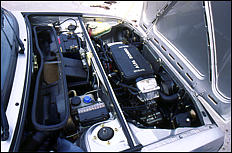 it's handling, and the chassis can handle consderably more power than ever
offered by Alfa Romeo, although in it's final 105bhp form the 1490cc engine
was powerful for it's size.
it's handling, and the chassis can handle consderably more power than ever
offered by Alfa Romeo, although in it's final 105bhp form the 1490cc engine
was powerful for it's size.
The high tension leads can also be replaced
with performance ones.
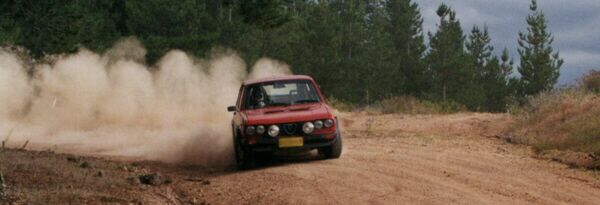 of the cylinder headand/or cylinder block (which will not be dealt with
here since it is not normally a DIY job) after which it may be worth fitting
an oil cooler. If overheating is a problem due to the increased power output
then a small hole can also be drilled through the plate in the thermostat.
of the cylinder headand/or cylinder block (which will not be dealt with
here since it is not normally a DIY job) after which it may be worth fitting
an oil cooler. If overheating is a problem due to the increased power output
then a small hole can also be drilled through the plate in the thermostat.
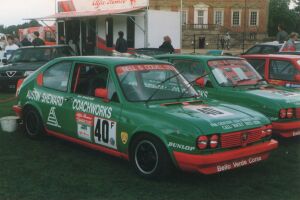 suspension
to be adjusted between these two, rather different, requirements. Coil
over units add more adjustability and can be purchased outright, or can
be made from standard dampers by welding a threaded sleeve to the standard tube.
suspension
to be adjusted between these two, rather different, requirements. Coil
over units add more adjustability and can be purchased outright, or can
be made from standard dampers by welding a threaded sleeve to the standard tube.
Identification
The Model numbers were 901 for the Alfasud,
902 for the Sprint and 904 for the Giardinetta.
The engine types were as follows :
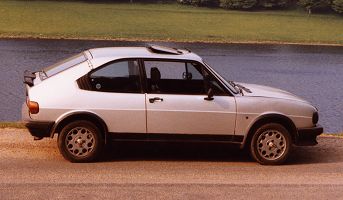
| Engine type | Capacity | Power output |
| 301.00 | 1186cc | 63bhp |
| 301.02 | 1186cc | 63bhp |
| 301.04 | 1186cc | 68bhp |
| 301.80 | 1286cc | 68bhp |
| 301.84 | 1286cc | 76bhp |
| 301.60 | 1351cc | 71bhp |
| 301.64 | 1351cc | 79bhp |
| 301.68 | 1351cc | 86bhp |
| 301.24 | 1490cc | 84bhp |
| 301.28 | 1490cc | 95bhp |
| 301.46 | 1490cc | 105bhp |
Maintenance
Mechanically the Alfasud is a reasonably
robust vehicle as long as it is well serviced. Items which should be closely
monitored are the timing belts, and their covers (dirt ingress can lead
to failure, with unpleasant consequences)and (like most older Italian cars)
everything electrical - especially earth connections !
We always recommend original parts where available.
Buying / Selling
Some tips to do before selling :
(they may seem obvious, but most people don't do them and thus are in a
weaker bargaining position)
Tidy inside the car thoroughly : hoover
the floor, empty all pockets, ashtrays (wash), glove compartment etc...,
wipe the trim with a damp cloth, give the cockpit a good airing to get
rid of any odours ! Reset the trip meter to 00000 - it is a pleasant (subconcious) surprise.
'Back to black' products are very effective
at temporarily restoring bumpers and trim. This makes a big difference
to any car. Do it a week before you expect people to view the car, otherwise
it may be a bit too obvious !
Jetwash under the car, especially under
the engine and in the wheelarches. The prospective buyer may be an enthusiast,
and this makes it easier for them to see what they want to check.
Obviously wash the car and clean the windows !
If you are going to buy a car always check the following :
On Alfasud's it is very neccessary to check
the bodywork. Pay special attention to the wheelarches, inner wings, suspension
and engine mounts, sill, door pillars (check for sagging doors), scuttle
panel and the floor (doors, bonnet and boot/hatch are also susceptible,
but are more easily replaced). If a sunroof is fitted check around the
edge for signs of rust.
Check for a damp carpet or the presence
of mould - if the carpet is damp then the floor is almost certainly corroded.
Check the main electrical functions - wipers,
lights, etc... try putting the main beam and wipers on at the same time.
Check the headlight reflectors for rust.
Check for excessve wear in the rear suspension bushes.
Check the brake pedal does not go to the
floor if pressed hard for a long time and check the gearchange for clean engagement.
Check tyre wear, uneven patterns could imply a bent chassis.
Always take it for a test drive. Check
that the car tracks in a straight line with no steering input and remains
in a straight line under braking. Find a large open area and complete several
lock to lock turns (also in reverse), listening for any noises. Try the
handbrake when moving - it brakes the front, but adjustment is unpleasant.
Uneven braking or no braking will indicate it's condition.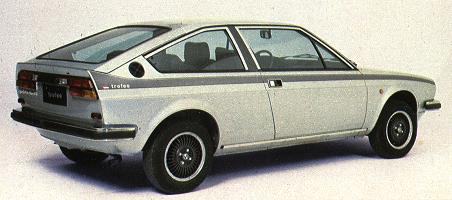 If the car has been standing give it a good run - this will clear out the
engine (reduce exhaust smoke), put a shine on the brake discs and loosen
up any joints that may otherwise make some noises.
If the car has been standing give it a good run - this will clear out the
engine (reduce exhaust smoke), put a shine on the brake discs and loosen
up any joints that may otherwise make some noises.
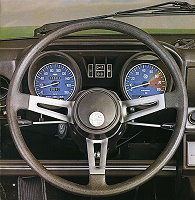 Check that there are no mismatching panels, large areas of discolouration or
signs of fresh paint. Compare the paint colour in the engine bay with that of the exterior.
Check that there are no mismatching panels, large areas of discolouration or
signs of fresh paint. Compare the paint colour in the engine bay with that of the exterior.
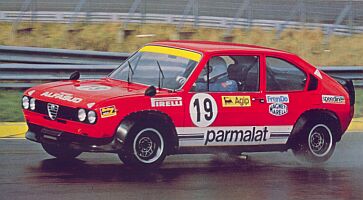 The engine should be run up to temperature,
check the exhaust for smoke, the condition of the breather (look for mayonnaise),
the condition of the oil filler cap (again white deposits can indicate head
gasket or other serious problems) and the colour of the coolant (preferably
not brown!). If the car has an oil pressure guage this should not drop
below 1 bar at idle, and should be around 3 to 4 bar
at speed. Listen to the noise of the engine, then depress the clutch and engage
first gear. Whatever noise has disappeared was coming from the gearbox,
what remains is from the engine. Check the colour of the oil using the
dipstick. A golden-brown is best, darker brown is ok, but thick and black
should be avoided.
The engine should be run up to temperature,
check the exhaust for smoke, the condition of the breather (look for mayonnaise),
the condition of the oil filler cap (again white deposits can indicate head
gasket or other serious problems) and the colour of the coolant (preferably
not brown!). If the car has an oil pressure guage this should not drop
below 1 bar at idle, and should be around 3 to 4 bar
at speed. Listen to the noise of the engine, then depress the clutch and engage
first gear. Whatever noise has disappeared was coming from the gearbox,
what remains is from the engine. Check the colour of the oil using the
dipstick. A golden-brown is best, darker brown is ok, but thick and black
should be avoided.
Links
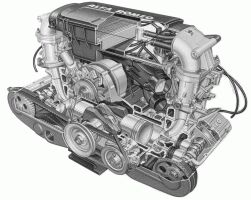
An Alfasud Sprint website
Another excellent Alfasud website
A French Alfasud website
Another Alfasud website
A Spanish Alfasud Sprint website (lots of motorsport)
Alfa
Romeo Alfasud books : buy them online here(in
association with Amazon)
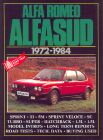 Alfa
Romeo Road Test Book : Alfa Romeo Alfasud 1972-1984 Alfa
Romeo Road Test Book : Alfa Romeo Alfasud 1972-1984
Like all the Brooklands Road Test books, a fascinating collection of magazine articles and the like from the days of the Alfasud. Includes normal road tests, long term tests, some modified cars, back to back comparisons with rivals and much more. |
edited by R.M.Clarke, 1988 |
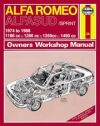 Alfa
Romeo Alfasud/Sprint(1974 to 87) Workshop Manual Alfa
Romeo Alfasud/Sprint(1974 to 87) Workshop Manual
An excellent workshop manual covering all areas of the car in great detail. |
Haynes, 1988 |
For more books on Alfa Romeo, see our Online Bookstore
Alfasud comment form
Your Comments
Alfasuds are the car to have and to hang. (Breather - Adelaide, Australia)
The Alfasud is giving a joy
of driving that I never have found in any other car. It's road handling
is fantastic and if you can keep the corrosion away you have a car which
will be a true classic in near future. (BS, Denmark)
I love my Alfasud,which we`ve owned since it was 6months old. Was stupid enough to swap it after about 3years for an Alfetta GTV 2000,
but realised my mistake and kept an eye on it so when came up for sale some 5yrs later bought it back. It will never leave us.
Own 4 other Alfas and they will come and go but not my 1981 Ti Veloce in as new condition and so much fun to drive. A totally "together car". (Richard J, New Zealand)
I'm currently restoring my 77 Alfasud...rust is my only drawback of owning the car...appart from that it is the best handling and enjoyable car to drive ever!!
A real unsung hero.... (Josh, Australia)
I've had my 1985 Alfa Sprint Clover Leaf for a year and I love it. It's just a really fun car to drive. It goes well on long trips and handles like a dream around town. Some fold down back seats would be good but roof racks now carry any extra baggage. (Dylan, Australia)
Great cars these shame about the rust, but point to point, just phenomenal, combination of steering, throttle response
and chassis loses little (but power) to todays pug and renault gti's. sotta love 'em (Steve, New Zealand)
I have owned six Alfasud's in all! My first being a W Reg 1200
Alfasud which i bought in 1991 when I was only 17. I had just passed my test
and this was to be the first of many alfa's. The last Alfa I owned was a 1990 G reg Alfa 33 1.5 ti, these are both very nice cars to drive but the
SUD is still hard to beat....(Barry, UK)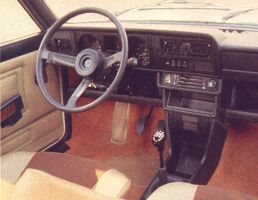 I've owned 2 Alfa's - a 1500
SUD and now the SUD GIARDINETTA. An absolute beauty - especially the amount
of space inside once the backseat is folded down. Handles like no other
car I have driven, even better than most new cars. Unfortunately the new
Alfa's are very expensive, so I think I will hold on to this one until
I can afford a new GTV! Safe driving. (Alwyn B., South Africa)
I've owned 2 Alfa's - a 1500
SUD and now the SUD GIARDINETTA. An absolute beauty - especially the amount
of space inside once the backseat is folded down. Handles like no other
car I have driven, even better than most new cars. Unfortunately the new
Alfa's are very expensive, so I think I will hold on to this one until
I can afford a new GTV! Safe driving. (Alwyn B., South Africa)
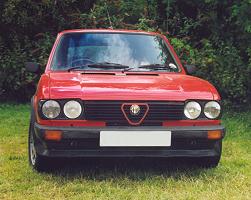 The Alfasud is one of the most passionaly cars. My parents had two of them when i was a child and now, 15 years later, it's me who drives with a Alfasud.
But now, i have to give it away because the rust is to much. Always the same thing. That's bad. So my tip to every owner of a Alfasud: don't touch the car in wintertime, be carefull und enjoy. You can be happy to own one.(Philippe, Switzerland)
The Alfasud is one of the most passionaly cars. My parents had two of them when i was a child and now, 15 years later, it's me who drives with a Alfasud.
But now, i have to give it away because the rust is to much. Always the same thing. That's bad. So my tip to every owner of a Alfasud: don't touch the car in wintertime, be carefull und enjoy. You can be happy to own one.(Philippe, Switzerland)
Wallpapers/Desktop Backgrounds of numerous Alfa Romeo's, including the Alfasud and Sprint, are available to download.
There are also various statistics regarding production and sales.![]() There is also a list of all our picture galleries (including museums,
motorshows and various events).
There is also a list of all our picture galleries (including museums,
motorshows and various events).
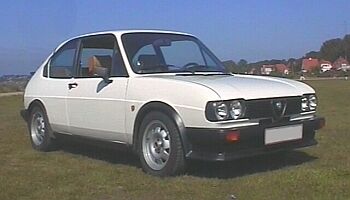
Use the buttons at the top to navigate further, or
Copyright © 2000 to 2011 CarsfromItaly